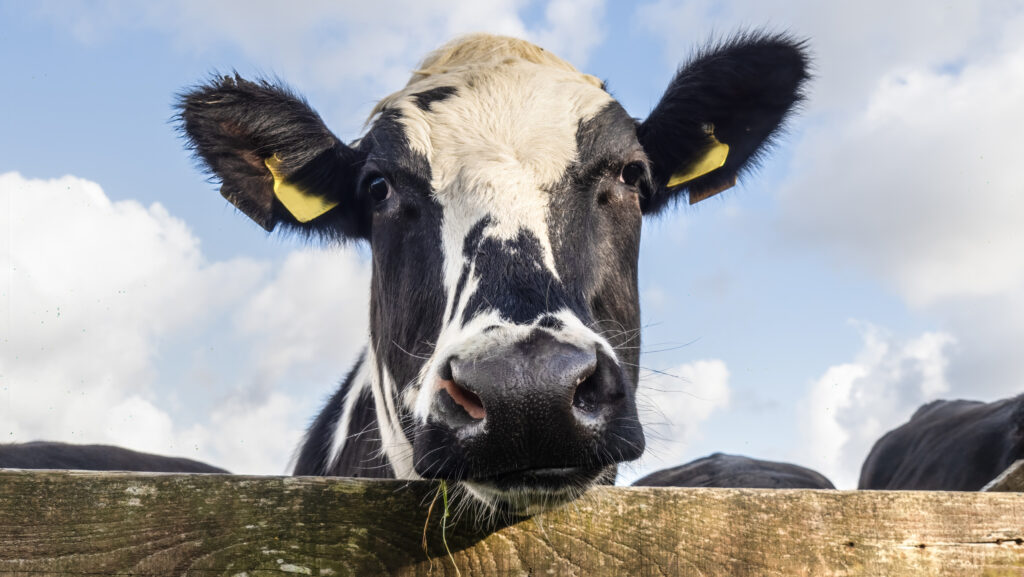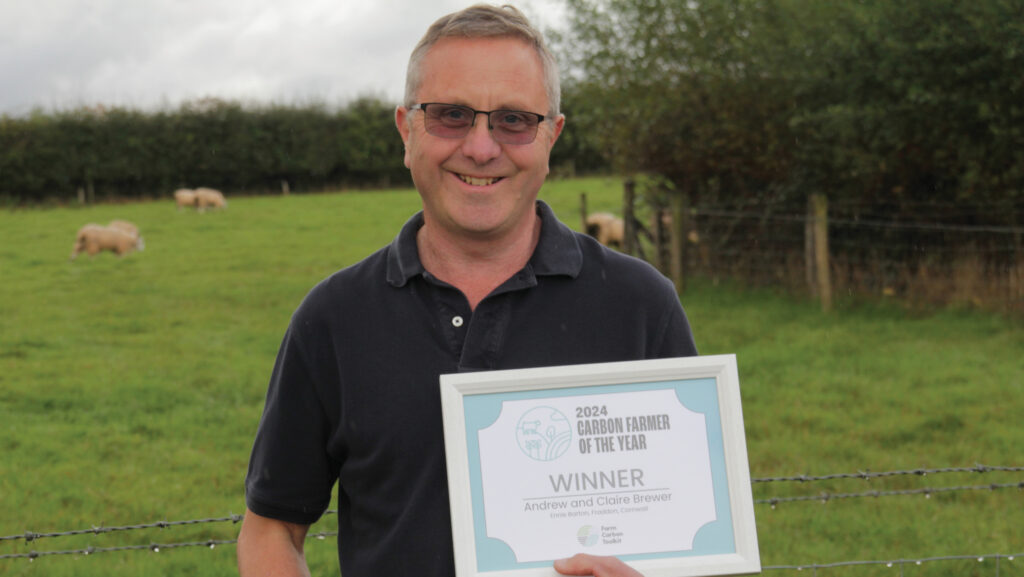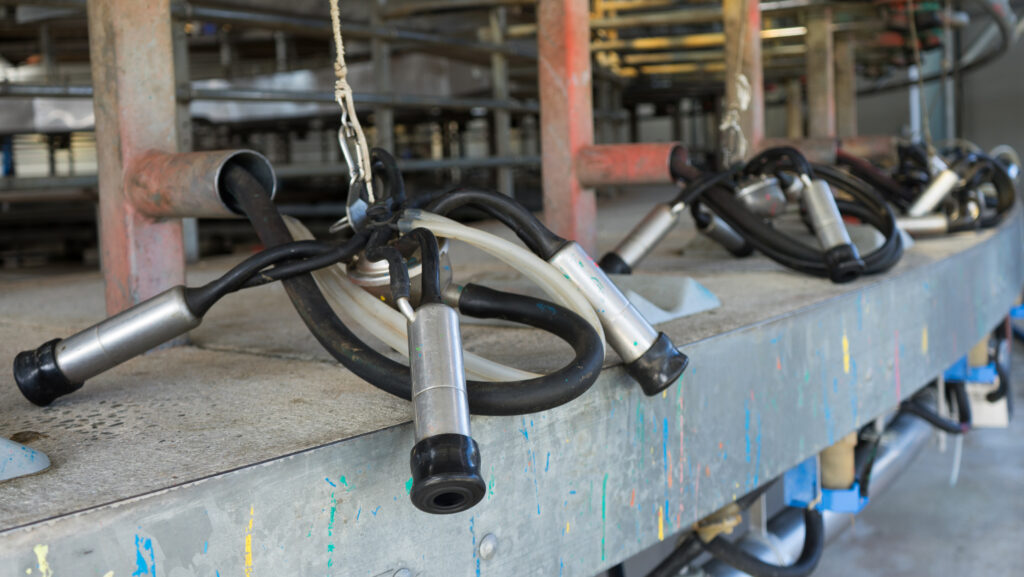How a dairy industry ambassador created local talent pipeline
 © Adobe Stock
© Adobe Stock A decade ago, Cornish dairy farmer Andrew Brewer asked: who will milk the cows?
His Nuffield scholarship took him around the world to find out how to attract high-quality people into dairying.
His conclusions were that dairy farmers should promote agriculture as a career to schoolchildren – and find a way to encourage rural families back to the land.
See also: 9 tips on employing dairy staff for the first time
Since then, Andrew’s daughters have grown up, he has become a grandfather, and his business has expanded, there are changes to management with cow numbers, enterprises and calving pattern.
He is also a pioneer in regen ag having stopped using artificial fertiliser five years ago.
Crucially, his own efforts (and in particular, he says, those of his wife, Claire) at promoting dairy farming have been rewarded at Ennis Barton, Fraddon, in Cornwall.
Farm facts
Ennis Barton Farm, Cornwall
- 445ha
- 450 Jersey crossbreds
- Beef calves finished off grass
- Average yield of 6,500 litres
- 700kg a cow concentrates
- Autumn block-calving
School visits
Today, Andrew confirms that both of his recent apprentices came into dairy farming because they first visited his farm as schoolchildren – and one of his current full-time employees grew up in the village.
“To attract high-quality people, we must be seen as a successful industry with a long-term future.
“Hosting visits has led to employees for us. Sometimes we’ve had children on work experience as well.
“We say yes if we have the opportunity. You have to sow seeds to raise a crop,” he says.
The Brewers began inviting school visits more than 20 years ago, when their two daughters were in primary school, and have continued to develop their engagement with the general public.
“The school visited us three times a year, so the children could see a whole year of our farming system as we are block-calving.
“Then we tried educating the educators by inviting all teachers and teaching assistants – about 40 to 50 people – to the farm for an afternoon, followed by a barbecue in the summer holidays,” he explains.
“We’re also quite involved with the Royal Cornwall Show’s Farm and Country Days, which are for 1,500 schoolchildren over two days every year.
“One year we took our cattle scales and asked the children to guess how many of them would it take to weigh the same as one cow.”
Andrew has welcomed the local secondary school’s top maths students for a day to work on farm calculations.
This gave them some practical knowledge and application and, he says, they were learning how farming needs all aptitudes of people.

Andrew Brewer © Farm Carbone Toolkit
This is a key message for Andrew: that everyone should be aware of the opportunities in agriculture – it is no longer about jobs for the “village idiot”.
But while he encourages other dairy farmers to be proactive and engage with the general public in their area, he says those who do so must love their dairy farming, otherwise the wrong message will be put across.
Another important factor is engaging with secondary school teachers and pupils, because this is when most early discussions about careers begin, he explains.
Educate the teachers
He suggests offering to help the nearest secondary school, being brave and inviting an inner-city school on farm – even offering to cover transport costs.
“It might just be the cheapest job advert you’ve ever paid for. You have to educate the teachers, because if you open doors to them, they will open doors for you.”
Andrew says he finds it “pretty good” communicating with non-farming children and adults.
He has discovered, though, that there can be a “massive range” in those wanting to engage, particularly among teachers who have preconceived ideas.
Despite this, he advocates starting small, grabbing any chance to engage and not being afraid to show anyone around the farm because it will be all new to them.
“We were calving cows over the garden wall and there was a cow giving birth not 10ft away and they were amazed to see a calf being born, how quickly it got to its feet and started sucking,” he says.
The dairy farm’s full-time employee grew up in the village, though without a farming background.
This is an advantage for a dairy farm business – the ability to provide employment and a house means that local people can stay local.
“If you have a profitable business, you can reinvest to create good facilities for your staff.
“We provide good-quality housing for them, not caravans. We try to provide accommodation that we would be happy to live in ourselves.
“People today want a better life and are willing to put the effort in at work if you give them the right working environment and create the right team.”
Being a better employer
Ten years ago, Andrew’s key messages were that staff are one of the most important resources of any business and should be treated accordingly.
He discovered on his travels that the best businesses value their workforces and that success attracts people – constant negativity repels them.
The dairy industry has made inroads into staff recruitment and retention since his scholarship, he admits.
Though he stresses: “It’s important to attend courses to learn to be better at engaging with the public and becoming a better employer to get better employees.”
Read Andrew Brewer’s Nuffield report, Who will Milk the Cows: the recruitment, training and retention of high quality workers in the dairy industry.
The People in Dairy Programme
When milk quotas were abolished and dairy farms began to expand in 2017, the Irish dairy industry realised it did not have enough people to its milk cows.
Fast-forward to this year, and Teagasc research centre at Moorepark in County Cork has four PhD students investigating how to attract people into dairy farming.
Under the banner “The People in Dairy Programme”, researcher Dr Connor Hogan says each project is about four to five years long.
The aim is to address and support the “human capital needs of dairy farms”.
“There are three priority areas: labour efficiency and people management; workplace attractiveness; and generational renewal and career progression,” he says.
Many farm working conditions need to change if milking cows is to become an attractive option – whether for employees or future business owners, particularly with the Irish emphasis on spring block-calving herds.

© Adobe Stock
Surveys have been used to establish current workloads and lifestyles to develop ways to enhance the work-life balance for farm owners, as well as make dairy farming a good workplace environment, says Connor.
Part of this also involves improving farmer skills in how to attract and retain staff.
“We have discovered that workplace attractiveness is a key element and this means looking at the basics of set work start and finish times, to compete with other sectors.
“Pay, hours worked and time-off are all important,” he says.
Teagasc does not go into schools to showcase dairy farming as a career, but its research supports a range of existing programmes aimed at 14 and 15 year olds.
